


Please enter the e-mail address provided during registration.
He doesn’t want to be confined by definitions. He avoids formulas and treats every project as a new experience. In the work of Marcin Czopek, founder of the Mistovia studio, dialogue plays a key role – with people, places, and materials. He thinks through form and enjoys when function grows naturally out of it, rather than the other way around. He emphasizes the importance of curiosity and creative experimentation, believing that bold concepts always defend themselves, and that aesthetics are a natural outcome of a process that begins with an idea and ends with emotion. In conversation with OMNIRES, he speaks about his beginnings, his inspirations, and about design as an ongoing search for solutions and a dialogue with reality.
Photos and videos: ZASOBY STUDIO | Interview: OMNIRES Editorial Team
He values beginnings the most – those moments when everything is still fluid, and ideas are only starting to find their form. For Marcin, the essence lies in the first sketches and conversations that help him understand the person he designs for – their needs, rhythm, and way of seeing the world. He believes that an interior should naturally grow from its context – the spirit of a place, the history of a building, or the story of its future resident. Aesthetics come later – as the natural result of the process, not its starting point.
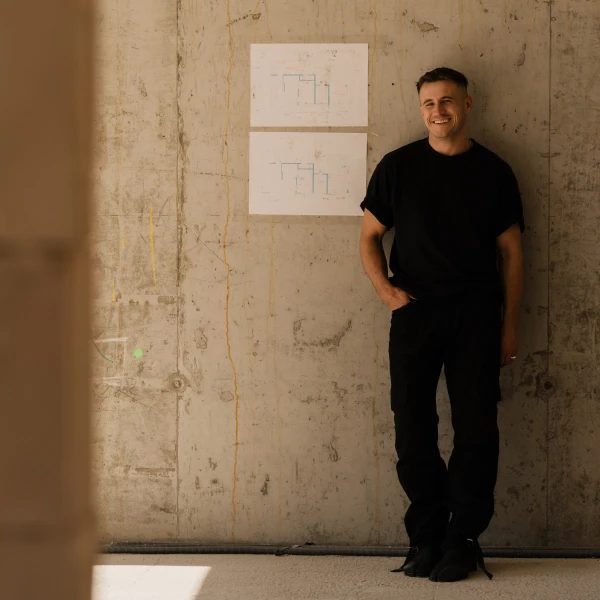
Where did your passion for design begin?
It all started with art. I used to draw and paint endlessly as a child. I dreamt of studying fine arts and becoming a painter, but life took me slightly elsewhere – to an art school focused on interior architecture, and later to university. It felt like a natural evolution: my love for creating slowly became a fascination with shaping space. When I began, interior architecture wasn’t as established as it is today. Most of my peers chose traditional architecture or urban design. I was drawn to what happens inside – the atmosphere of a place, its proportions, its light. The way an interior can tell a story.
We’re visiting one of your construction sites today. Why this particular place?
I wanted to show what my work truly looks like. Design doesn’t happen only on the screen – it is born in space, in light, in matter. This is where ideas gain weight, scent, and texture. Here, light sculpts shapes, and shadow completes their meaning. On site, the project stops being a drawing – it becomes an experience that responds to the reality around it.
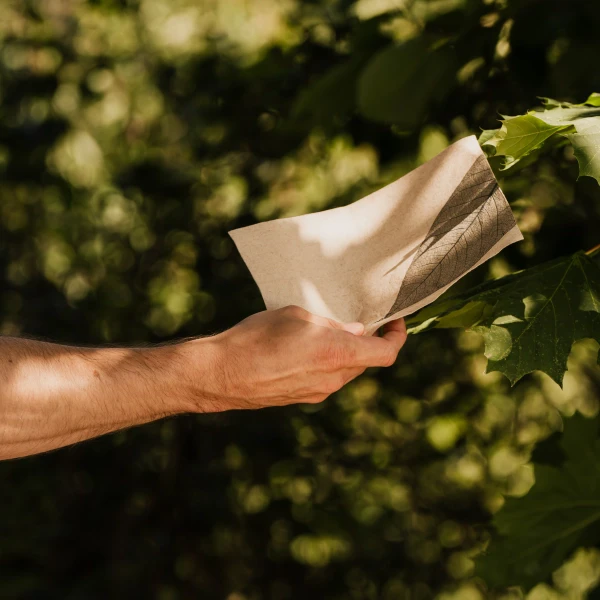
What emotions do you wish to evoke through your projects?
Authenticity, calm, and curiosity. I’ve noticed that in a world saturated with repetitive images from social media, everything starts to look the same. That’s why honesty and emotion remain the only genuine path forward. I want my interiors to awaken creativity and reflection – to encourage people to pause, to look at space from a slightly different angle.
What is your design process?
I always begin with a conversation. The most important thing is to get to know the person I’m designing for – to understand their needs, lifestyle, and way of thinking. This stage often feels a bit like the work of a psychologist: it’s about truly entering someone else’s world. Once we share a common vision, an idea emerges – a key moment for me, as it makes it easier to explain the process that follows. Aesthetics come later; they are the natural outcome of the journey. I begin with forms – creating geometric shapes and assigning them functions. Finally, I add the details – textures, colours, light – the elements that complete the space and give it its final expression.

Materials and textures hold a special place in your designs. How do you work with them?
For me, this is one of the most captivating stages of the process. Material testing often happens on site. I bring samples to the location to observe how they respond to light – how tones shift, how they interact with the space around them. Each material has a life of its own, so this becomes a kind of trial by light. Initially, I create moodboards, but I always make final decisions in person. This allows me to feel the materials – their texture, their energy. Physical contact is irreplaceable; only then can you truly sense how an interior will speak to the senses.
What materials fascinate you the most?
I have a deep affection for natural materials – wood, stone, glass, and textiles. I’m fascinated by the stories they carry within. Veneer, for instance, can reveal a tree’s “illness” through irregular grain patterns – imperfections that give it soul. I love to experiment with colour, texture, and finish. I’m especially drawn to glass – its structure, its ability to bend and shape light. I explore fusing, stained glass, and the delicate transitions found in woven fabrics. I work closely with local artisans and artists, translating their creativity into tangible form. This process is my endless field of exploration and inspiration.
Marcin’s design process is a mindful journey – from the first conversations and sculptural sketches to the selection of materials and details that come to life through light and touch. He enjoys experimenting with materials, exploring how their combinations can transform the atmosphere of a space. He seeks textures that enrich the sensory experience – like the diamond-cut patterns found in the CONTOUR collection fittings. Collaborating with local artisans and artists, he brings their sensitivity and craftsmanship into his own work. Each interior thus becomes an experiment, a dialogue, and a creation – unique in both form and function.
When I design an interior, I don’t think in terms of walls, floors, or ceilings – I think in terms of form. The shape I create often later becomes a piece of furniture. I like it when function grows naturally out of form, not the other way around.

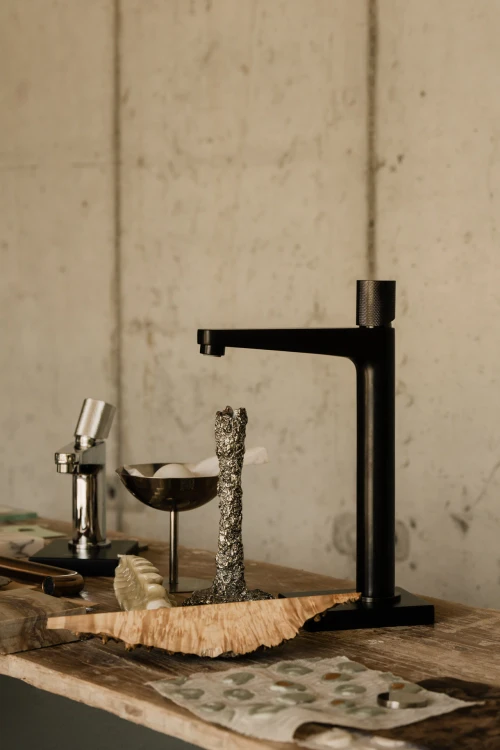
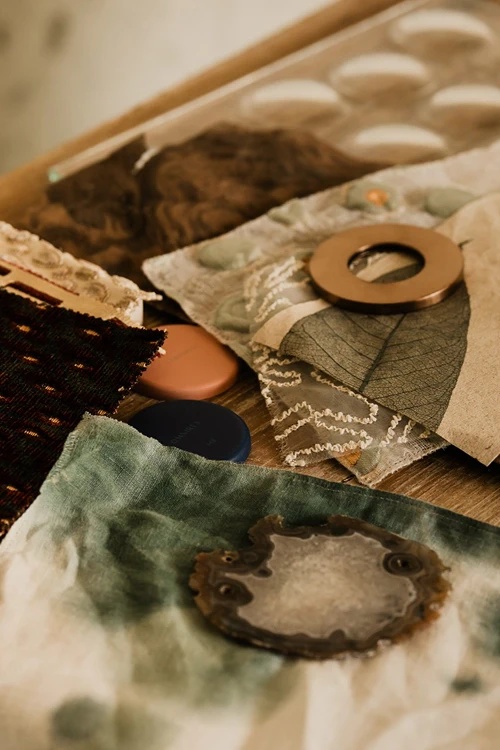
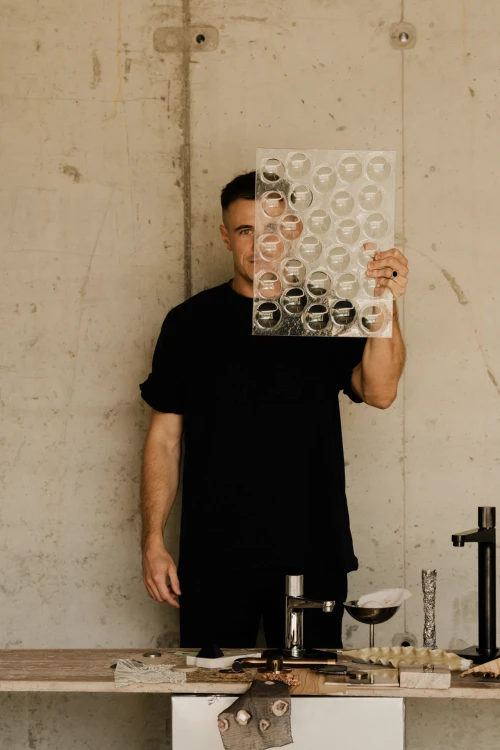
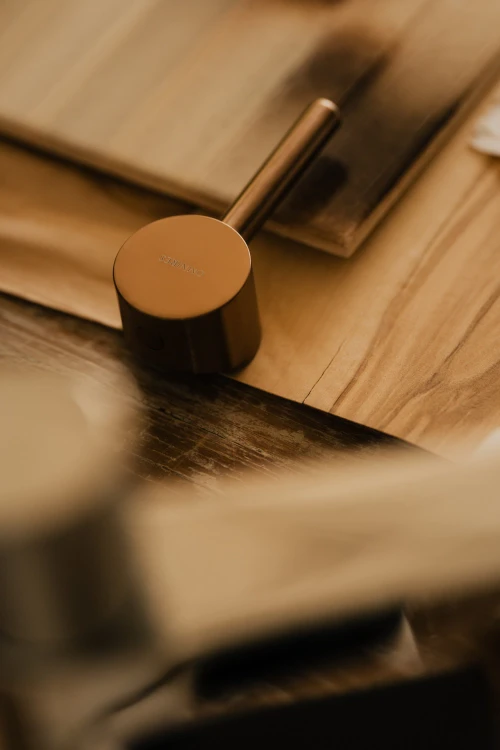
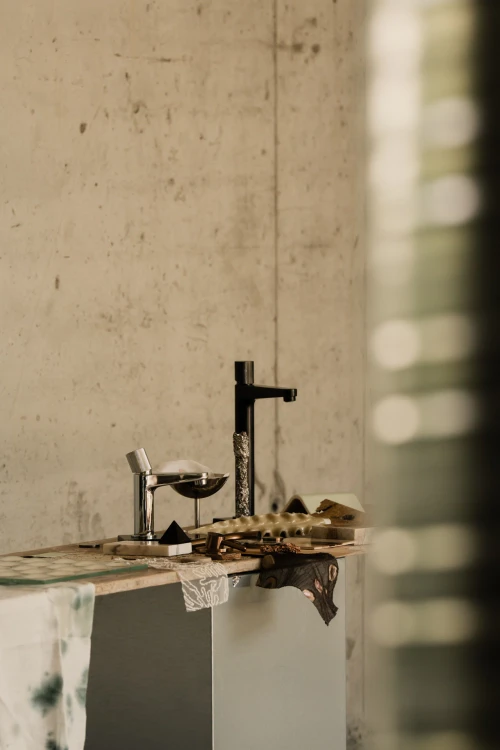
Soon the OMNIRES Showroom will open in Warsaw’s Powiśle district, showcasing not only the brand’s portfolio but also original material compositions by some of Poland’s most charismatic interior designers, including Marcin Czopek of Mistovia. Czopek’s material board reflects the designer’s pursuit of meaning and emotion woven into texture and colour, revealing his unique sensitivity and aesthetic language. Conceived as an invitation to reflection, it becomes a true source of inspiration – a story told through materials, inviting personal interpretation and creative exploration. The composition opens up space for imagination and discovery, forming a narrative about the very process of creation – one that celebrates authenticity, emotion, and timeless beauty.